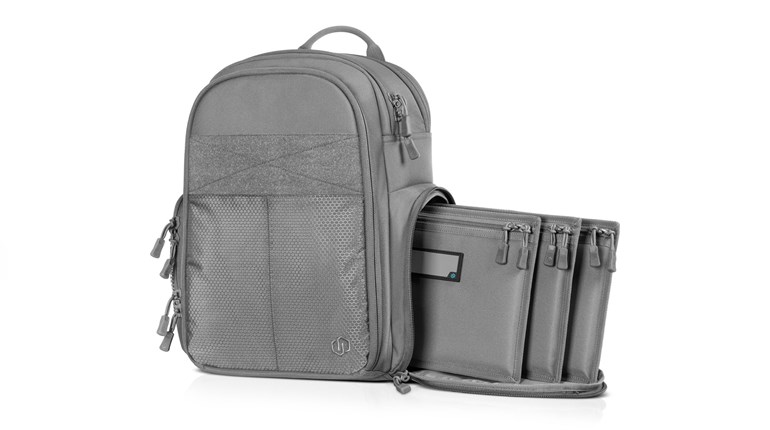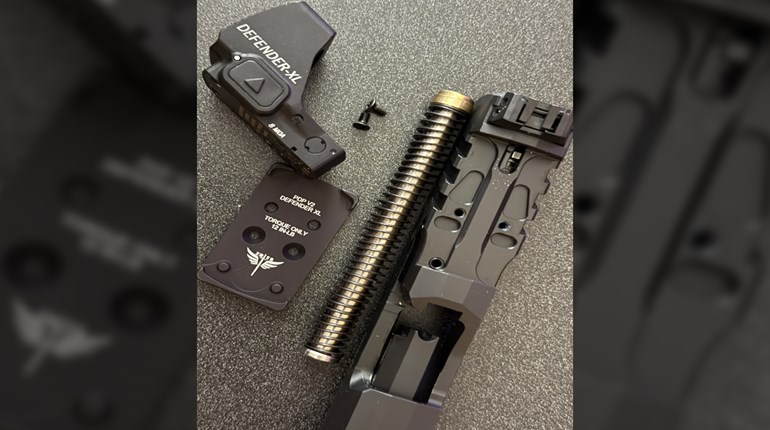
So, you can hit a lot of 10s and Xs shooting prone from the 600-yard line, but does that mean you can hit a deer in the vitals for a humane harvest at the same range from a field position? Effective Range Targets offers an inexpensive way to clearly illustrate whether a hunter has the marksmanship skills to take those shots at extended ranges.
“Effective” on what?
What is, “effective range?” There are several different definitions that depend upon specific applications, but in general the term refers to the maximum distance at which a marksman/firearm/cartridge combination can reliably hit an intended target with a satisfactory result. Necessary satisfaction differs depending upon whether the target be paper, steel, an enemy or a game animal.

“Effective range” is a military term seldom heard in hunting circles, but it is a concept that deserves attention especially when considering shooting big game at extended distances. To that end, JMA Outdoors, Inc., a business composed of a family of hunters, has developed the paper Effective Range Target for shooting at 100 yards that will indicate to the marksman whether he or she has the skills to reliably hit a big game in the vitals out to 600 yards.
Reduced target
Consider that the NRA MR-1 600-yard target X-ring is six inches across; the 10-ring spans 12 inches, the latter about the size of a deer’s vital heart/lung area. The hunting challenge differs from competition in that the hunter gets only one or perhaps two shots at a game animal, and that most shots are rarely taken prone with a sling for support. Probably most shots are taken quickly from the offhand position, with opportunities for sitting or kneeling shots less frequent. Designed for setup at close range, the Effective Range Target (ERT) allows the hunter to realistically evaluate the difficulty of extended range shots from various field shooting positions.

The concept behind the JMA Outdoors ERT isn’t novel—it echoes the NRA High Power “reduced targets” for simulating 200-, 300- and 600-yard targets at 100 yards—but the target itself is certainly different. The concentric rings of the target each represent the size of a big game animal’s vital zone as it would appear from 100 to 600 yards. Setting up the target 100 yards from the shooter, the large outer ring is the classic, “paper plate” size vital zone of a whitetail deer at 100 yards. The next ring represents the size of the vital zone as it would appear at 200 yards. The remaining inner rings shrink in diameter as simulated range reaches out to 300, 400, 500 and 600 yards. The heavy horizontal lines and black centers below are sighting marks for scoped rifles already zeroed to strike two, three and four inches high at 100 yards.
Training, mentoring—and entertainment
To illustrate here, we used the ERT while testing a Henry Long Ranger lever-action rifle in 6.5 Creedmoor at 100 yards for a future report on the rifle. The ERT is not intended for shooting from the bench and the point of the target isn’t in shooting a tight group; rather, it is in showing the hunter the basic level of marksmanship required in reliably hitting a big game animal’s vital area at longer range—and whether he or she possesses it.
No, the ERT cannot take into account slope angles or the effect of wind on a bullet beyond 100 yards. Yet it is still an excellent tool for mentoring a new hunter by demonstrating the difficulty in taking longer shots, and why ethical hunters should know their limits. Beyond its utilitarian service, the ERT also has entertainment value: bring a handful of targets to the range and challenge your friends to demonstrate their own skills at a simulated 600 yards.
A variety of ERTs are available for representing the differing vital area sizes of different game animals. The one shown here is approximate to whitetail deer, desert bighorn, mouflon sheep and black bear. For more information and to order these unique targets, visit www.EffectiveRangeTargets.com.
































